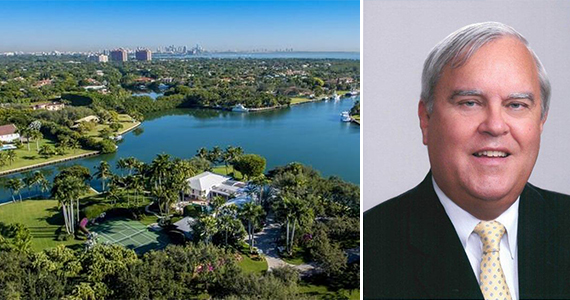Despite President-elect Donald Trump’s skepticism toward climate change, Coral Gables Mayor James C. Cason, whose city is one of the South Florida municipalities on the front line of rising sea levels, said he hopes that “Trump, as a businessman, will want to protect the value of private investment” and government facilities threatened by climate impacts once he’s in office.
In Coral Gables alone, there are about $15 billion in investments, and the city’s elevation ranges between zero to 4 feet above sea level, Cason said during a phone conference for the media on Wednesday sponsored by the Washington-based World Resources Institute, a global research organization that works on climate and other critical issues affecting the environment and development.
The city of 52,000 has about 47 miles of coastline and waterways and has already felt the effects of higher tides. Coral Gables has 301 boats that need to pass under bridges to reach the ocean, but many can’t get out until a low tide, Cason said. And next year, the situation may get worse.
“We see the octopus in the room,” the mayor said, referring to the octopus that was trapped in a Miami Beach parking garage after a high tide. In Coral Gables, fish were swimming in a parking lot and salt water is entering the city from below, which will affect the aquifers.
The city is already investing in a variety of initiatives: vulnerability studies and planning for rising sea levels; joining 26 municipalities in four counties to coordinate mitigation actions; developing a 10-year sustainable master plan; collecting data on critical infrastructure, plus other programs. It has already published a document for the public discussing legal considerations and financial options as sea levels invade land.
But Coral Gables and other cities will still require substantial financial help from the state and federal governments.
“This is an existential issue for a city like Coral Gables,” Cason said. But “The governor doesn’t even want to talk about sea level rise.”
In addition to the many South Florida communities threatened by rising seas, the federal government has tens of billions of dollars in facilities in the region, including Homestead Air Reserve Base (about 2.9 feet above sea level) and other military installations that are at risk, the mayor said.
Also participating in the WRI panel were Dawn Zimmer, the mayor of Hoboken, New Jersey, who is a Democrat; C. Forbes Tomkins, a research analyst at the WTI, and Christina De Concini, the WTI’s director of government affairs. The discussion was to show that mayors from both political parties run cities that are affected by climate change and are working together to raise awareness of the issue and call for federal and state action.
Cason, who is a Republican and served as a diplomat before becoming the mayor of Coral Gables, discussed several key issues impacting city and responded to reporters’ questions.
Some of his other main points:
- Only about 23 percent of Coral Gables’ businesses and residents have federal flood insurance. “It’s very expensive for homes along the waterfront because the risk is so great,” he said. “We’re built out and most of the people living along the waterfront are taking the [insurance] risk themselves.” It may not be long before people in the city will not be able to obtain 30-year mortgages, he added.
- Some residents along the waterfront will eventually have to decide whether to move out, and the city will have to decide if it will be able to provide services in the affected areas. The city has published a study on the legal ramifications of “an eventual retreat,” but the issue of possibly leaving areas “is like cancer … people don’t want to talk about it,” Cason said. Residents, though, are worried about how the phenomenon will affect their grandchildren. “Their grandchildren will be up to their waists in water.”
- Coral Gables is also spending money on detailed maps of vulnerable areas, and needs more buoys and tidal gauges to show people what is actually happening.
- The city government is not receiving a lot of emails from residents asking about rising sea levels and what needs to be done, the mayor said. “But residents are receptive to our taking a leadership position on what they and their grandchildren can expect. We talk to them about risk levels,” but it’s essential to prepare for a rise in sea levels.
- Both Cason and Hoboken’s Mayor Zimmer concurred on the issues, stressing that more federal money is needed to make coastal communities more resilient before conditions worsen. “The federal and state governments will jump in when you’ve been slammed by something,” Cason said. “After the event, they come to help rebuild. We haven’t had any evidence of state or federal interest” to invest in building more resilient communities.
- Rising sea levels also are impacting the Caribbean. At some point, millions of people my leave the islands and will likely come to South Florida.
Cason nonetheless was optimistic about efforts to find solutions. Students and faculty at local universities – like Florida International University, the University of Miami and Florida Atlantic University – are interested in learning about climate change and are seeking technological solutions, he said.
